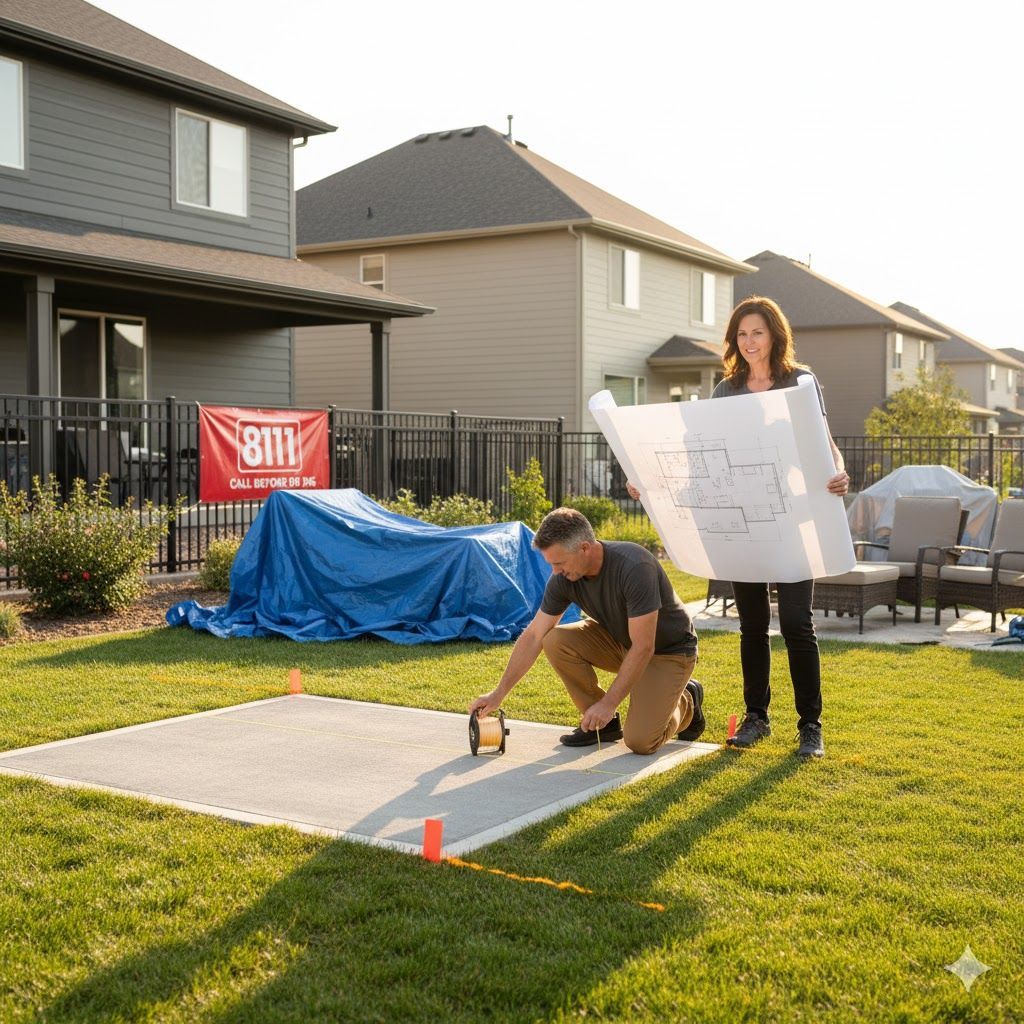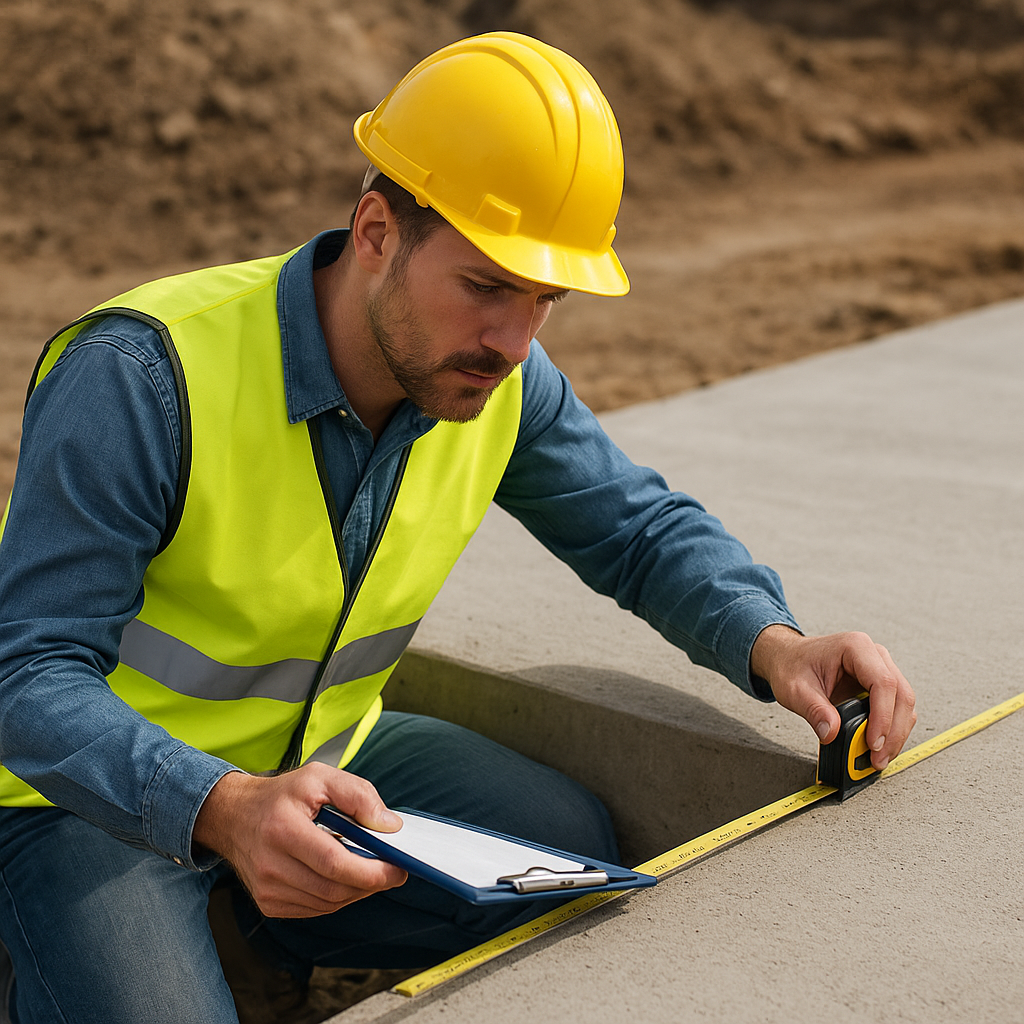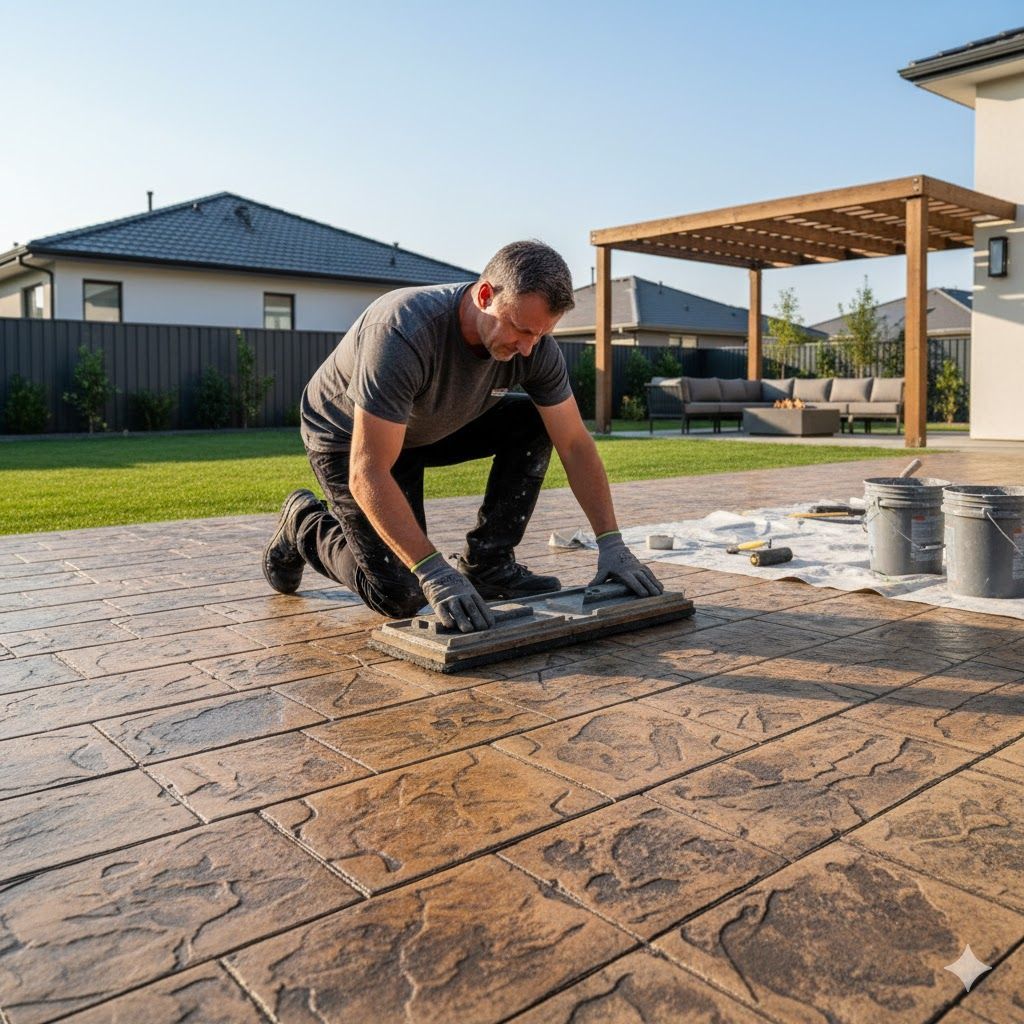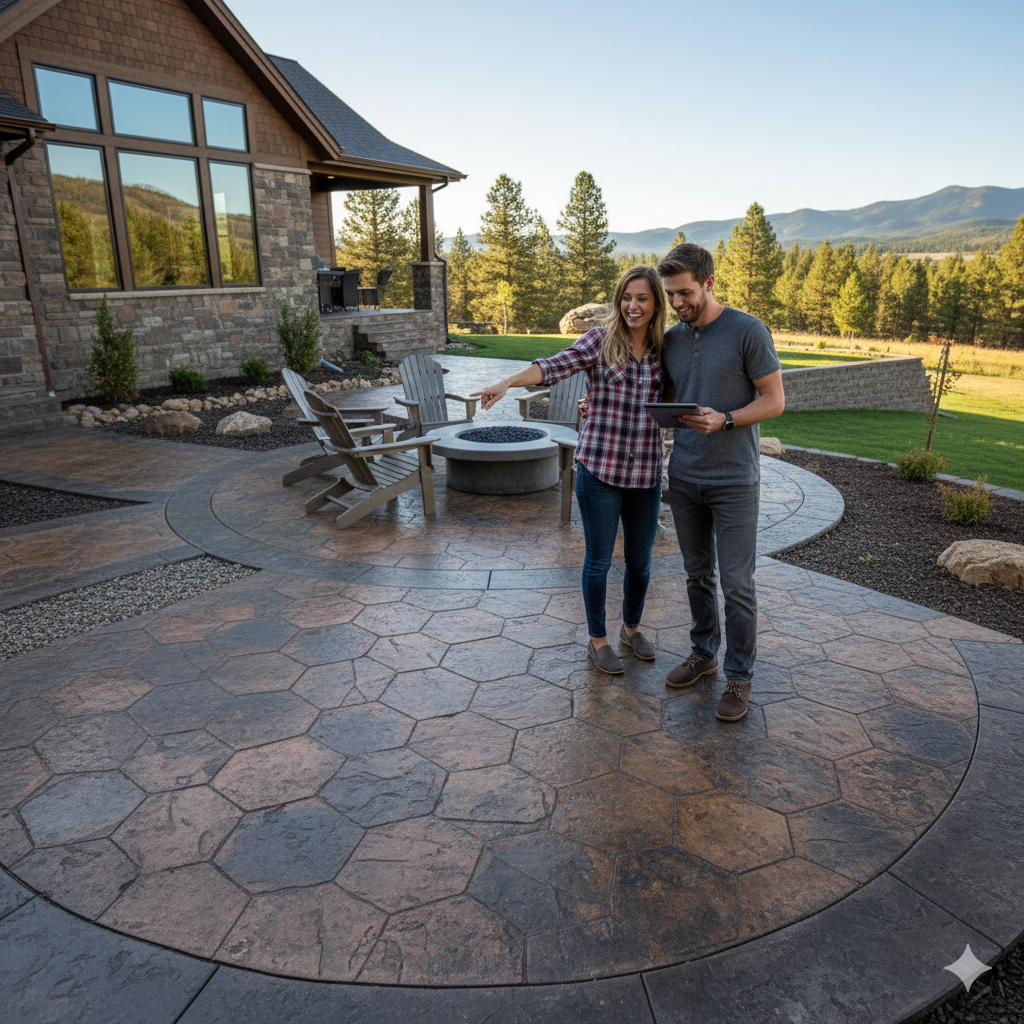5 Telltale Signs: When to Stop Patching and Invest in a New Concrete Driveway
Your concrete driveway is more than just a place to park your car; it's a critical part of your home's curb appeal and structural integrity. Over time, all concrete surfaces require maintenance, and most minor issues can be solved with concrete repair techniques like crack filling or resurfacing.
But what happens when the damage goes deeper than the surface? There comes a point where continued patching is no longer cost-effective or safe. For homeowners, recognizing this tipping point is essential to prevent small problems from turning into major, expensive disasters.
This guide will walk you through the five most important signs that your driveway has passed the point of easy concrete repair and needs a complete replacement.
The Concrete Repair Dilemma: Repair vs. Replace
The decision to repair or replace is often a balance between cost, longevity, and the extent of the damage. Simple cracks or minor discoloration can typically be fixed. However, when the underlying foundation or subgrade is compromised, a replacement offers the only permanent solution. As industry professionals often say, "You can put a fresh coat of paint on a rotten wall, but it won't stop the rot." The same is true for a driveway with serious structural failure.
Statistic: While minor concrete repair like crack filling costs as little as $0.50–$3.00 per linear foot, a full concrete driveway replacement averages $8 to $18 per square foot. However, resurfacing or patching a structurally failed driveway only provides a temporary fix that can fail again within a year, making replacement the more financially sound, long-term choice.
1. Widespread, Interconnected Cracking (Alligator Cracking)
When you see a single, long crack on your driveway, it's usually a sign of normal wear and tear or minor ground movement. This is a common issue that is easily fixed with targeted concrete repair.
However, the problem is far more serious when cracks spiderweb across a large area, forming a pattern that resembles alligator skin. This is often called "alligator cracking" or "map cracking."
Why Alligator Cracking is Serious
This widespread, interconnected network of cracks is a clear indicator of subgrade failure. The subgrade is the soil and base material beneath your concrete slab. When this base weakens due to poor compaction, excessive moisture, or repeated freeze-thaw cycles, it can no longer support the heavy concrete above it.
It’s Not Surface Damage: Unlike cosmetic surface cracks, alligator cracking means the entire slab is compromised.
Water Intrusion: Every crack acts like a tiny funnel, directing water into the subgrade, accelerating the breakdown process and potentially leading to foundation issues near your home.
If more than 25% of your driveway is covered in this type of cracking, the structural integrity is gone. No amount of surface patching or simple concrete repair will fix the issue; you need to remove the old concrete, address the failing subgrade, and pour a new slab.
Related Service: If you are seeing this level of widespread failure, a foundation inspection is often recommended to ensure the problem isn't impacting the slab foundation of your home. You can learn more about how professionals handle these problems by checking out resources on concrete foundation repair service in Mankato, MN.
2. Severe Sinking, Uneven Slabs, or Heaving
A level surface is key to a safe and functional driveway. When one section of your driveway has noticeably sunk lower than an adjacent section, or if a slab has heaved (pushed upwards) due to tree roots or frost, this points to a fundamental structural problem.
The Dangers of Uneven Concrete
Uneven concrete is more than just an eyesore; it's a significant liability and a sign of serious distress:
Safety Hazard: Differences in height of more than half an inch create tripping hazards for family and visitors.
Water Flow Problems: Sinking slabs often redirect water toward your home's foundation or basement, increasing the risk of costly water damage.
Compromised Structure: Heaving and sinking indicate that the ground underneath is moving. This usually means that soil is washing away (erosion), or the soil is expanding and contracting due to moisture or cold weather.
While some sunken areas can be temporarily leveled using techniques like poly-jacking (concrete lifting), severe movement—especially sections that are broken and cracked where they meet—requires replacement. A professional will assess the cause of the movement (e.g., poor drainage) and fix that issue
before pouring the new driveway to ensure the problem doesn't immediately return.
3. Spalling, Pitting, and Scaling Across the Surface
Spalling and scaling refer to the disintegration of the concrete surface. This is when thin layers or small pieces of the concrete flake off, exposing the rough aggregate (the gravel and stone inside the concrete mix) underneath. Pitting is similar, characterized by small, round depressions in the surface.
Causes and Why It Leads to Replacement
This type of damage is typically caused by:
Improper Finishing: The concrete was mixed with too much water, or it was finished too early while water was still on the surface.
De-icing Salts: The use of chemical de-icers accelerates surface failure, especially in winter climates.
Freeze-Thaw Cycles: Water seeps into the concrete's pores and freezes, expanding and breaking the surface layer.
While small areas of spalling can be fixed with concrete resurfacing, when the damage is widespread (e.g., covering 40% or more of the slab), resurfacing becomes a very short-term solution. The new resurfacing material is only as strong as the deteriorating concrete beneath it.
If your driveway looks like it's crumbling and the entire top layer is becoming rough or pitted, the best long-term investment is a full replacement with a new, properly mixed and sealed concrete designed to resist the elements in your area.
4. Extensive Discoloration and Deep Staining
While discoloration is primarily an aesthetic issue, when it's deep and cannot be cleaned, it can signal a few problems that replacement might solve.
When Stains Are More Than Skin Deep
A few oil spots can be removed or hidden with staining, but deep, widespread discoloration often happens in older driveways that were never properly sealed or have been exposed to harsh chemicals for years. If your goal is to refresh your home's curb appeal, trying to clean or stain a deeply compromised, rough surface is rarely worth the effort.
More importantly, a new driveway allows you to choose from modern, aesthetically pleasing options that can dramatically improve your home's exterior:
Stamped Concrete: Replicates the look of natural stone, brick, or wood. (See stamped concrete service in Mankato, MN)
Colored Concrete: Integrates pigments for a custom look that is uniform and long-lasting.
Fresh Finish: A brand new, sealed concrete driveway immediately provides a crisp, clean aesthetic that adds value to your property.
If you are already considering major aesthetic upgrades for your exterior, such as new concrete patios in Mankato, MN, investing in a new driveway at the same time ensures a cohesive, professional look for your entire property.
5. Age and Recurring Repairs (The Cycle of Patching)
Every material has a natural lifespan. The typical lifespan of a well-maintained concrete driveway is 20 to 30 years. If your driveway is approaching this age and you find yourself calling for concrete repair every year, you are caught in the cycle of patching.
Break the Maintenance Cycle
Continuously paying for minor repairs quickly adds up and still leaves you with an old, compromised surface.
The 50% Rule: Many contractors suggest that if the cost of repairs is 50% or more of the cost of a full replacement, you should replace the concrete. Why pay half the price for a driveway that might only last another 2-5 years when you could pay the full price for one that lasts 20-30 years?
New Technology: Modern concrete mixes and installation techniques are superior to those used decades ago. A new slab will be poured with proper subgrade preparation, reinforcing materials, and high-quality sealants to ensure decades of low-maintenance use.
As a homeowner, your time and money are valuable. If you are frequently fixing cracks, patching sinking sections, or dealing with surface failures, it’s time to stop the cycle. A full replacement is an investment that provides peace of mind, safety, and a significant boost to your home's long-term value.
Quote: As a veteran contractor once advised, "Small cracks are concrete's way of whispering; structural failure is its way of screaming. When it's screaming, don't just put a muzzle on it—you have to address the underlying issue or you'll be fixing it forever."
Conclusion: Taking the Next Step
Recognizing the five signs above is the first critical step toward protecting your home and maximizing its value. Whether you require minor concrete repair or a full concrete installation and replacement, choosing a reputable, local company is paramount.
If you are unsure whether your driveway can be saved, the best course of action is to schedule an inspection with a professional concrete service. They can assess the damage, determine the root cause, and provide a clear, professional recommendation.
Call To Action (CTA):
Ready to find out if your concrete can be saved? Don’t wait for small cracks to become structural issues. Contact the local experts at
Precision Paving Mankato for a free, no-obligation estimate today. Whether you need an expert opinion on
concrete repair, a new stamped patio, or a full
concrete driveway repair service in Mankato, MN, our team is ready to deliver a flawless, long-lasting solution.
Contact us or visit our
services page to learn more!
Frequently Asked Questions (FAQ)
Q1: Is it always better to replace a driveway than to resurface it?
A: Not always. Resurfacing (applying a polymer concrete overlay) is an excellent, cost-effective option for driveways that are structurally sound but have minor surface damage, pitting, or discoloration. However, if your driveway has deep, wide cracks (over 1/4 inch) or has sunk significantly, resurfacing will only be a temporary bandage over a broken foundation. In those cases, full replacement is necessary for long-term value and safety.
Q2: How long does a new concrete driveway last?
A: With proper installation and routine maintenance, a new concrete driveway can last 25 to 40 years. Key factors in longevity include proper subgrade preparation, the quality of the concrete mix used, and applying a sealer every 2 to 5 years.
Q3: Do I need a permit for concrete repair or replacement?
A: For basic crack filling or minor concrete repair, a permit is usually not required. However, for a full concrete installation or a major project like concrete pouring service in Mankato, MN where the curb or public right-of-way is involved, a local permit from the city or county is typically mandatory. Always check with your contractor to ensure all permits are secured before work begins.
Q4: What is the main cause of my driveway cracking?
A: The most common causes of concrete cracking are:
Water: Excessive moisture in the subgrade causes soil to expand, settle, or erode, leading to unstable support.
Temperature: The natural expansion and contraction of concrete due to freeze-thaw cycles.
Heavy Loads: Repeated heavy vehicle traffic exceeding the concrete's rated strength.
Poor Preparation: Insufficiently compacted subgrade before the concrete was pour
New Title




